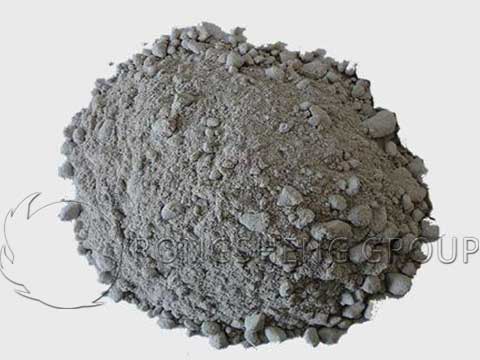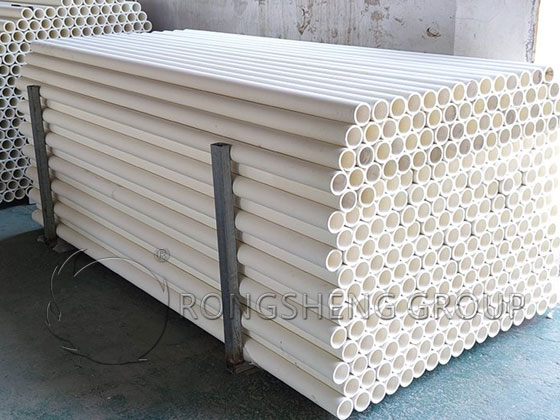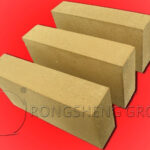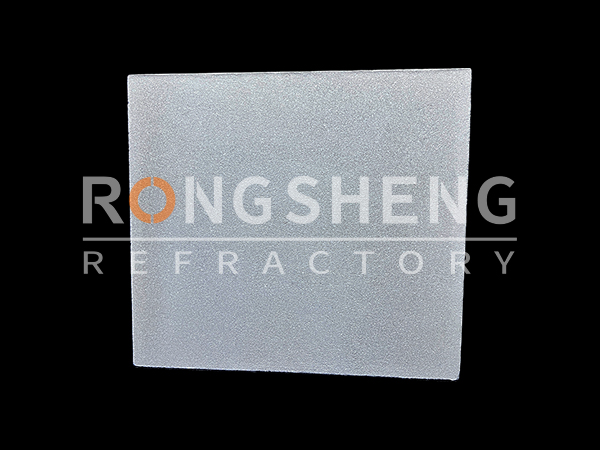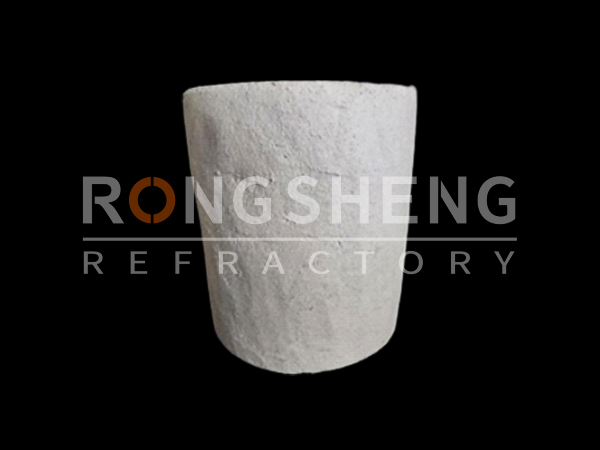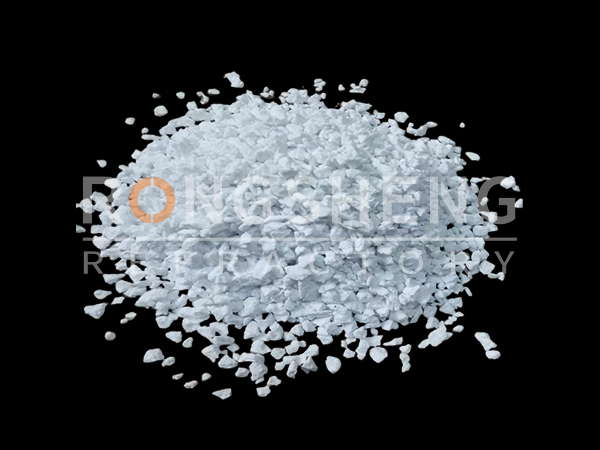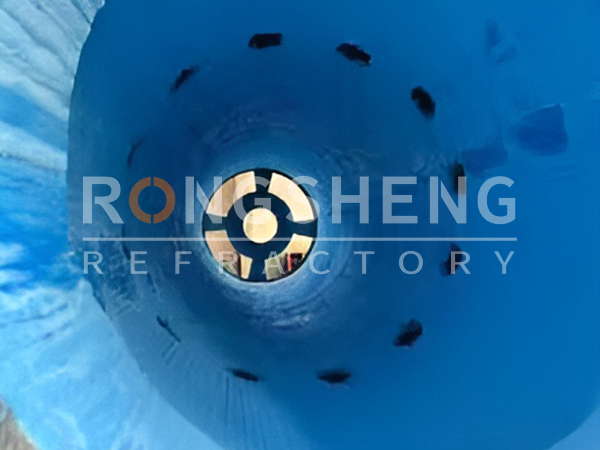Blast furnace iron smelting possesses the dominant position for a long term, but with the strained supply of coke and severe environmental pollution, new iron smelting technique is researched and now there are two matured non coke iron smelting methods: sponge iron producing method and COREX method.
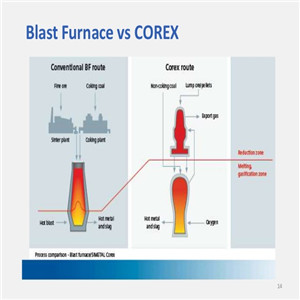
- Refractory materials used in sponge iron production
The raw materials to produce sponge iron are: fine iron ore, iron scrap and other materials with high iron oxide content, iron oxide is reduced to metal iron through reaction with reductants. The reaction is occurred in solid phase and discharges a large amount of gas, so the produced solid iron will have many pores, looks like sponge, so it is called sponge iron. The reaction temperature is usually between 800~1300℃, the reductants used are coal, natural gas, coal gas and other non coke fuel. The equipments for sponge iron production are stand kiln, square kiln, ring kiln, rotary kiln, tunnel kiln and car bottom continuous furnace, etc. No matter what kind of kiln it is, the working temperature is not very high, alumina-silica series refractory material will meet the furnace lining temperature requirement. The refractory materials used in corresponding parts are as follows:
Rotary kiln pre heating zone: clay castable, high alumina castable.
Rotary kiln sintering zone: high alumina castable.
Rotary kiln reduction zone: high alumina castable.
Tunnel kiln, stand kiln and other kilns: high alumina bricks, high alumina cordierite bricks and clay bricks.
Insulation layer of all kilns: light weight clay bricks, refractory ceramic fiber blankets.
- Refractory materials used COREX iron production
COREX method belongs to molten reduction method, it has these advantages: ① Can produce iron liquid without coke and sintered ore. ② Can utilize powder ore and power coal, enhance resource using efficiency, per ton energy consumption can reduce 20%. ③ Production line and equipments are simple. ④ Is good for environment protection, without sintering machine and coke furnace, decreases 70% of contamination. ⑤ Low investment, flexible production scale. 6. Production efficiency is enhanced.
COREX melt vaporizing furnace can be divided into dry zone, fluidized combustion zone, tuyere zone and furnace hearth. The slag has large amount of FeO, which will cause severe corrosion to refractory materials. Other factors such as molten slag corrosion, alkali steam and iron liquid chemical corrosion, thermal molten damage and spall, material impaction and dust current fluxing can make different damage to furnace lining, which ultimately cause the short service life of the equipment. So furnace lining material plays a key role for the development of this new iron making method.
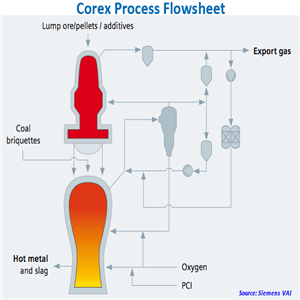
Dry zone: the temperature of this part is between 1000~1200℃, material impaction to this part is very strong, so abrasion resistant high alumina bricks are used, and Fe2O3 content should as low as possible.
Fluidized combustion zone: The temperature is 1600~1700℃, materials become fluidized and have drastic scouring to the linings, refractory materials suffer very high thermal load and high temperature abrasion, meanwhile, the temperature fluctuation between air blasting and cease can cause spall. So the lining of this part should choose Si3N4 bonded SiC bricks, which have good thermal shock resistance, thermal stability and scouring resistance.
Tuyere zone: Here is in pure oxygen atmosphere, refractory bricks have high thermal load and strict working condition, because molten slag and iron liquid is formed here and have strong corrosion to tuyere bricks. So SiC bricks are usually used in tuyere. From upper part of tuyere to manhole, MgO-C brick is usually adopted, but it has hydration trend, so Si3N4 bonded SiC bricks is suggested to be used as inner lining. Except for SiC bricks, chrome corundum bricks or Sialon bonded corundum bricks which have good corrosion resistance and spall resistance can also be used for this part.
Furnace hearth and bottom: These parts constantly contact with high temperature iron liquid and slag, which is the main reason for refractory material damage, so micro pore carbon bricks with ceramic cup lining is usually used here. Al2O3-SiC-C bricks are used at the tapping hole.
For more information about refractory materials used in metallurgical industry, chemical industry, cement industry, glass industry, power plant and other industries, please feel free to contact us, our technical team will give you the most professional advices and technical supports.
